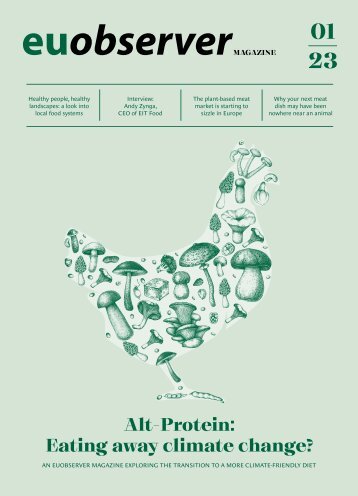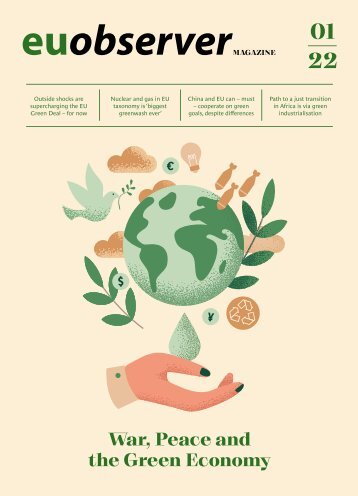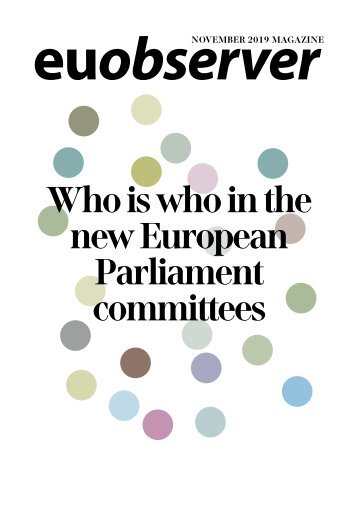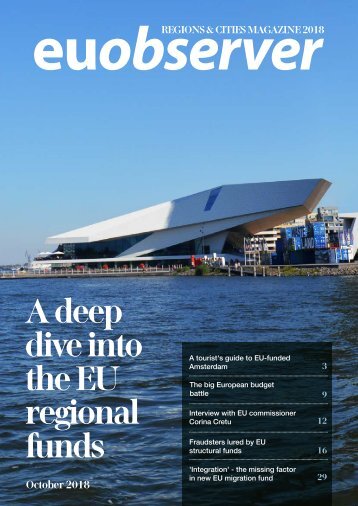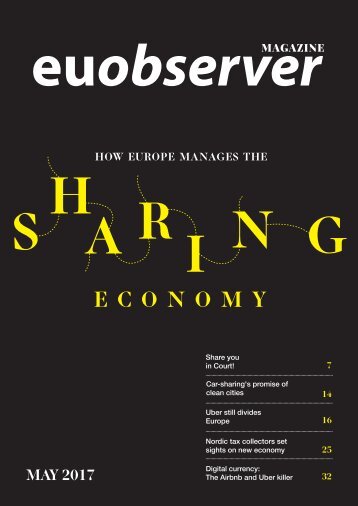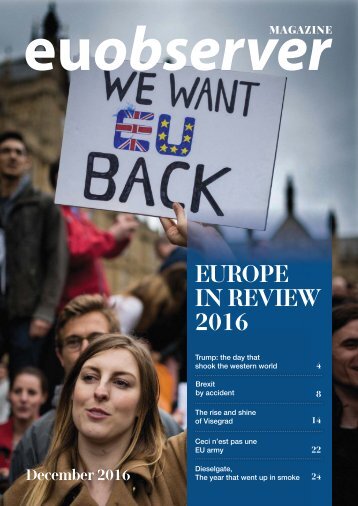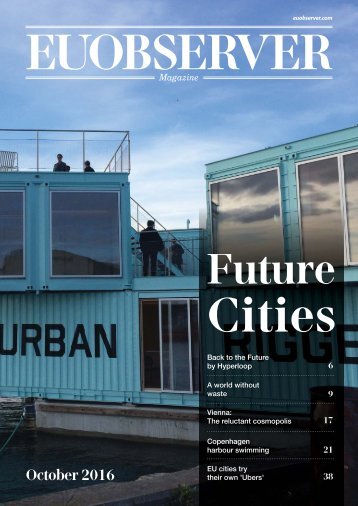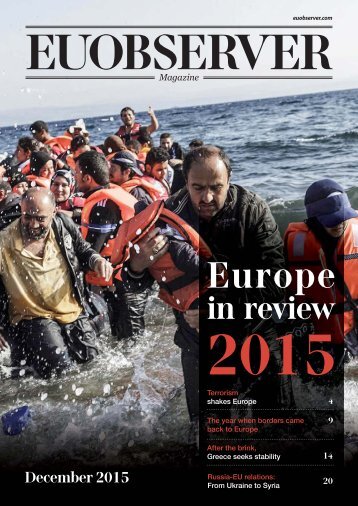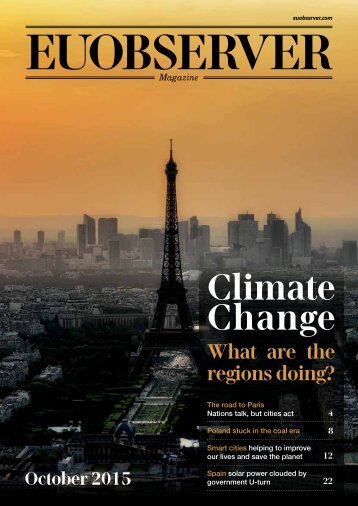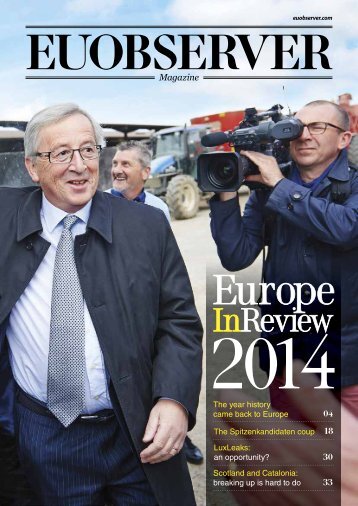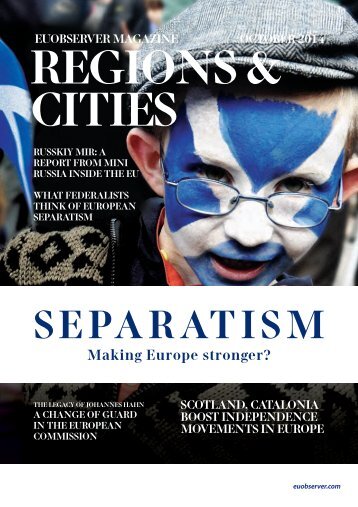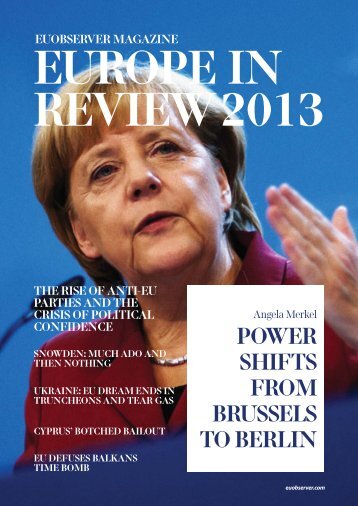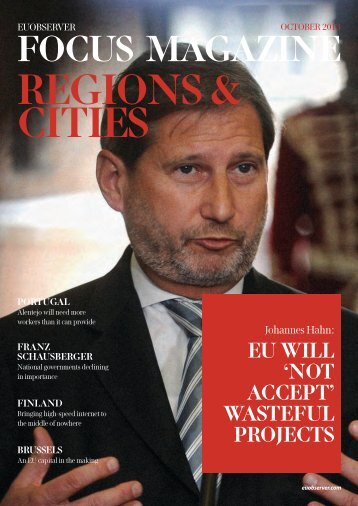War, Peace and the Green Economy
- Text
- Green economy
- Peace
- War
- Ukraine
- China
- Africa
- Europe
HOW OTHERS SEE THE EU
HOW OTHERS SEE THE EU WAR, PEACE AND THE GREEN ECONOMY Forget the Similar conclusions were made in the most recent report from the Intergovernmental Panel on Climate Change (IPCC) published in February. link between environmental stresses and migration, and studies which show that migration may even decrease during droughts,” he says. scaremongers: climate change will not lead to mass migration to Europe Reality or alarmist?: EUobserver talks to two leading experts who question the conventional assumption that climate change will drive millions of people to migrate to Europe. Aside from the extremely sobering warnings, the report said fundamental changes are needed throughout society to mitigate the damage and give humanity a fighting chance. Already, the rise in weather and climate extremes has led to some irreversible impacts, as natural and human systems are pushed beyond their ability to adapt, it said. And up to 3.6 billion people currently live in contexts that are highly vulnerable to climate change. It also gives a perspective of a future with a window of opportunity that is “brief and rapidly closing.” But will it force people to move? If nothing is done, the World Bank estimates anywhere between 40 million to 216 million people by 2050 could migrate internally within their regions. The people who are most at risk are those people who are immobile.” Andrew Harper De Haas also warns against drawing conclusions that more poverty would automatically lead to migration. Instead, he points out that as countries develop, more people move from rural to urban areas. Like the UNHCR’s Harper, he says climate and weather are not the only factors that determine peoples’ decision to migrate. The Dutch academic also insists that there is no direct link between climate change mobility, especially of people who move long distances. “The poorest countries and also the poorest sections within populations have lower migration rates than the slightly better off and it even accounts for internal migration,” he says. ◄ By NIKOLAJ NIELSEN Predictions that thousands, even millions, of people will flee to Europe from Africa or elsewhere due to climate change are not substantiated by studies. In fact, the people most affected by climate change are often the most-impoverished, and as such are the least likely to migrate. Others who are better off will leave, but usually they will head to somewhere else within their own country or region. The many Doomsday forecasts which say the opposite are at best intellectually dishonest and at worst, they are mere fear-mongering. They can also feed xenophobia, says Andrew Harper, a special advisor on climate action at the UN refugee agency (UNHCR). “When we talk about climate, refugees, or, ‘migration’, it sort of takes the eyes off the people who are most at risk,” he said. “The people who are most at risk are those people who are immobile,” he said. True, some 90 percent of the world’s refugees originate from countries that are already impacted by climate change. But Harper says a whole host of other issues — ranging from poor governance, to lack of education, and corruption — also need to be taken into account. “If we just focus on climate change, it almost provides a ‘get-out-of-jail-free card’ for the incompetence and corruption that goes on in many of these states,” says Harper. He cites the drought in Syria during 2006-2010, which turned most of the country into a desert, and forced hundreds of thousands of farmers to move to the cities. But Harper says there are many questions on whether the Syrian government provided a sufficient response at the time. “So was it climate change? Or was it poor governance?” he asks. ‘Look forwards, plan backwards’ Climate change should instead be used to trigger a rethink of how humanity and society work with the environment, according to Harper. That means looking ahead and planning backwards to mitigate the harm. The bank’s two reports, published in September 2021 and based on models looking at the Middle East and North Africa, East Asia and the Pacific, and Eastern Europe and Central Asia, said the worst affected would be sub-Saharan Africa, while the least impacted would be in Eastern Europe and Central Asia. Both reports focus on climate impacts such as water stress, drops in crop productivity, and rising sea-levels, compounded by storm surges. They also focus on internal migration, meaning migration within a country’s borders, not cross-border migration. And they conclude by saying that “immediate and concerted action” would reduce the scale of climate migration by as much as 80 percent. “The bottom-line message is that early action is key and the window of opportunity is narrowing,” according to a World Bank spokesperson. However, while the report itself offers a much-more nuanced view, the bank’s press release highlighted the more alarmist figure of 216 million potential migrants. “I think it is refreshing to see that this report primarily focused on internal mobility,” says Hein de Haas, a Dutch sociologist, environmental geographer, and professor at the University of Amsterdam. He is also one of the founding members of the International Migration Institute at the University of Oxford. De Haas warns that the World Bank report is not transparent about the methodological grounds for these estimates, and also questions the apparent underlying assumption that less water availability would necessarily imply more people would go on the move. “There is extensive evidence from empirical studies questioning these assumptions, which failed to find a clear About Nikolaj Nielsen Nikolaj was born in Denmark but spent a better part of his life in Belgium, France and the United States. He joined EUobserver in 2012, where he primarily covers migration, human rights and transparency issues. His reporting for EUobserver has taken him to Algeria, Belarus, Egypt, Lebanon, Moldova, Russia, Transnistria, Turkey, Uganda, Ukraine and off the Libyan coast. 25
- Page 1 and 2: MAGAZINE 01 22 Outside shocks are s
- Page 4: TABLE OF CONTENTS WAR, PEACE AND TH
- Page 8: WHAT’S HAPPENING IN THE EU WAR, P
- Page 12: WHAT’S HAPPENING IN THE EU WAR, P
- Page 16: WHAT’S HAPPENING IN THE EU Does t
- Page 20: HOW OTHERS SEE THE EU WAR, PEACE AN
- Page 26: WAR, PEACE AND THE GREEN ECONOMY Pa
- Page 30: WAR, PEACE AND THE GREEN ECONOMY Af
- Page 34: HOW OTHERS SEE THE EU Just as the E
- Page 38: WAR, PEACE AND THE GREEN ECONOMY IN
- Page 42: PEOPLE IN THE NEWS - HILDA FLAVIA N
- Page 46: An A-Z glossary of climate change t
Inappropriate
Loading...
Mail this publication
Loading...
Embed
Loading...

